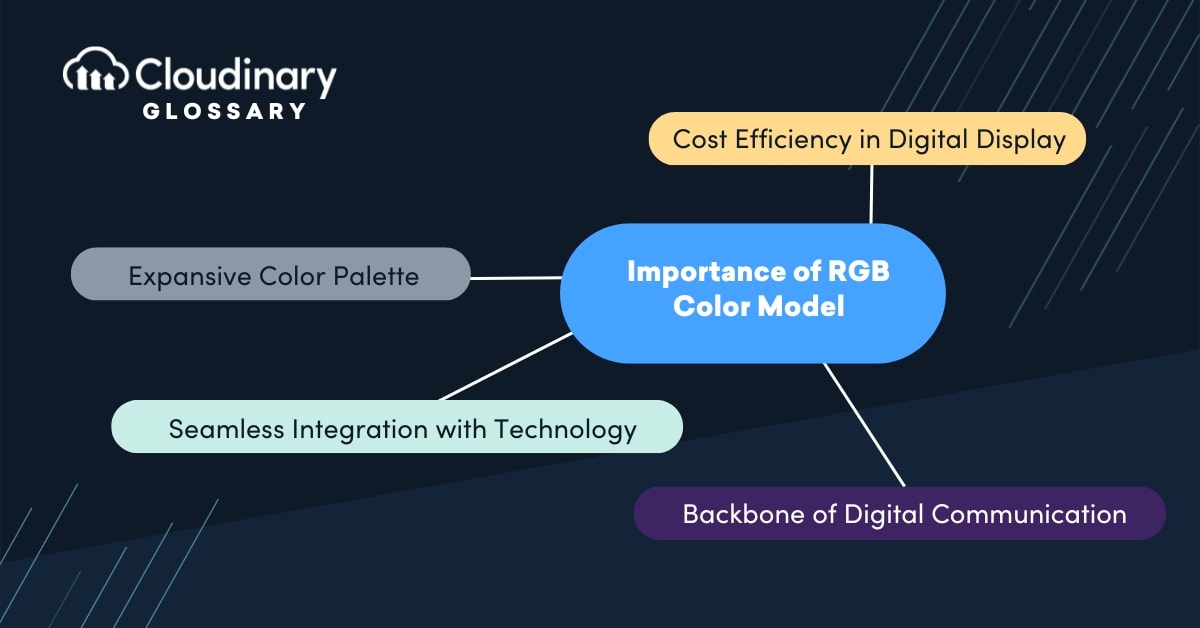
What Is an RGB Color Model?
The RGB color model is the most widely used color model for digital displays. The acronym RGB stands for Red, Green, and Blue, which are the primary colors of light. In this model, colors are created by combining different intensities of red, green, and blue light.
How The RGB Color Model Works
Colors in the RGB model are denoted by their intensity levels, which range from 0 to 255 for each color channel (red, green, and blue). The combination of these values creates a unique color. For example:
- RGB(255, 0, 0) represents full-intensity red
- RGB(0, 255, 0) represents full-intensity green
- RGB(255, 255, 255) represents white (full intensity of all three colors)
- RGB(0, 0, 0) represents black (absence of light)
The RGB color model operates on an additive color system, meaning that the more light you add, the closer the result gets to white.
How Is RGB Color Used?
The RGB color model is the foundation of how digital devices display visual content. Here are some common uses:
Digital Displays
RGB is the default color model for screens, including televisions, monitors, smartphones, and projectors. This is because RGB uses light as its core medium, which aligns with how screens emit color (via red, green, and blue pixels).
Web Design
Websites typically use RGB values for specifying colors via CSS (Cascading Style Sheets) to maintain a consistent appearance across digital platforms. Hexadecimal codes (e.g., #FF0000 for red) often represent RGB values in web design.
Video Game Design and Animation
The vibrant, dynamic visuals we see in video games and animations are rendered using the RGB model, as it supports visually stunning colors on digital displays.
Photography and Image Editing
Photo editing software like Photoshop and Lightroom relies on RGB for image manipulation. Adjustments are made on red, green, and blue channels to modify the color balance, saturation, and tones.
Video and Film
Since modern displays are RGB-based, videos and films created for digital platforms often follow this color model to ensure accurate representation on screens.
RGB vs CMYK: What’s the Difference?
While RGB is the standard for digital media, the CMYK color model is primarily used in print. The two systems differ in several key aspects:
Primary Colors:
- RGB: Red, Green, Blue
- CMYK: Cyan, Magenta, Yellow, Black
Purpose:
- RGB: Designed for digital displays and screens
- CMYK: Created for printed media (e.g., flyers, posters, and brochures)
Color Production:
- RGB: Combines light to create color (additive color model)
- CMYK: Uses ink to absorb light and produce color (subtractive color model)
Range of Colors (Gamut):
- RGB: Offers a wider color gamut, resulting in more vibrant and luminous colors.
- CMYK: Has a narrower color gamut, more limited by the physical properties of ink.
Which one is better?
- RGB is better-suited for vibrant and dynamic digital visuals.
- CMYK, on the other hand, is tailored to match the physical limitations of printer ink.
Note: Converting designs from RGB to CMYK for printing requires careful adjustments to ensure color accuracy, as not all RGB colors can be replicated in the CMYK spectrum.
Tips for Optimizing Your Use of RGB Colors
To make the most of the RGB color model in your projects, follow these best practices:
- Choose Compatible Software: To design or edit using RGB, use tools that support its full capabilities, such as Photoshop, Illustrator, or other graphic design software.
- Pay Attention to Color Calibration: Screen colors can look different across devices. Ensure your monitor is calibrated correctly to display RGB colors accurately and meet industry standards.
- Use Web-Safe Colors: When designing for the web, stick to web-safe colors to ensure your work looks consistent across browsers and screens. This is particularly important for older devices with limited display capabilities.
- Test Your Design on Multiple Screens: Since RGB colors can appear differently on different devices, always test your designs on several screens to identify inconsistencies.
- Save Files in RGB Mode for Digital Use: Always save digital files (such as graphics, images, or videos) in RGB mode to preserve the correct color profiles for digital platforms. If converting to CMYK for print, make sure to preview the changes to avoid color shifts.
Importance of the RGB Color Model
The RGB color model is fundamentally important in the world of visual media. Here’s why:
Expansive Color Palette
RGB covers a wide range of colors, making it ideal for creating dynamic and vibrant visuals in the digital space. This flexibility drives creativity and innovation in design.
Seamless Integration with Technology
Most modern digital devices, from televisions to smartphones, use RGB for displaying visuals. By aligning with this standard, creators ensure their content appears as intended across platforms.
Cost Efficiency in Digital Display
RGB requires no physical materials like ink, making it ideal for cost-effective design work in environments where digital displays are the end product.
Backbone of Digital Communication
From gaming to online branding, RGB forms the backbone of how brands and products communicate visually in a digital-first world. Without RGB, our digital experiences would be far less vibrant and immersive.

The Bottom Line
The RGB color model is essential in the digital age, serving as the foundation for how we experience colors on screens. Its versatility, wide color range, and compatibility with digital devices make it the go-to color system for designers, photographers, web developers, and content creators.
While it differs from CMYK, which is tailored for print, RGB offers unparalleled vibrancy and flexibility for digital applications. By understanding how to use and optimize RGB colors effectively, you can create stunning visuals that resonate with your audience.

